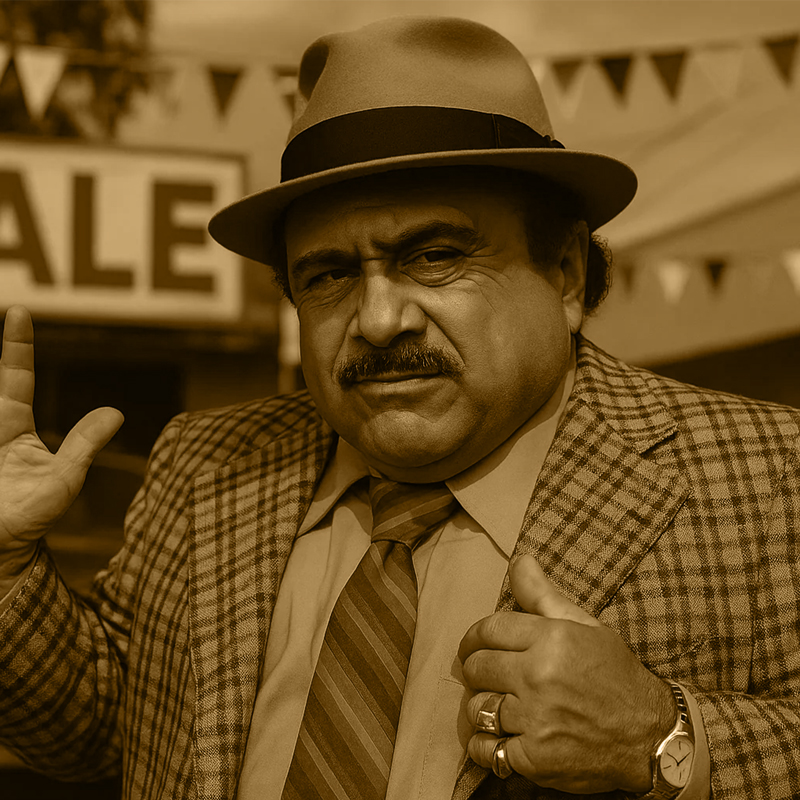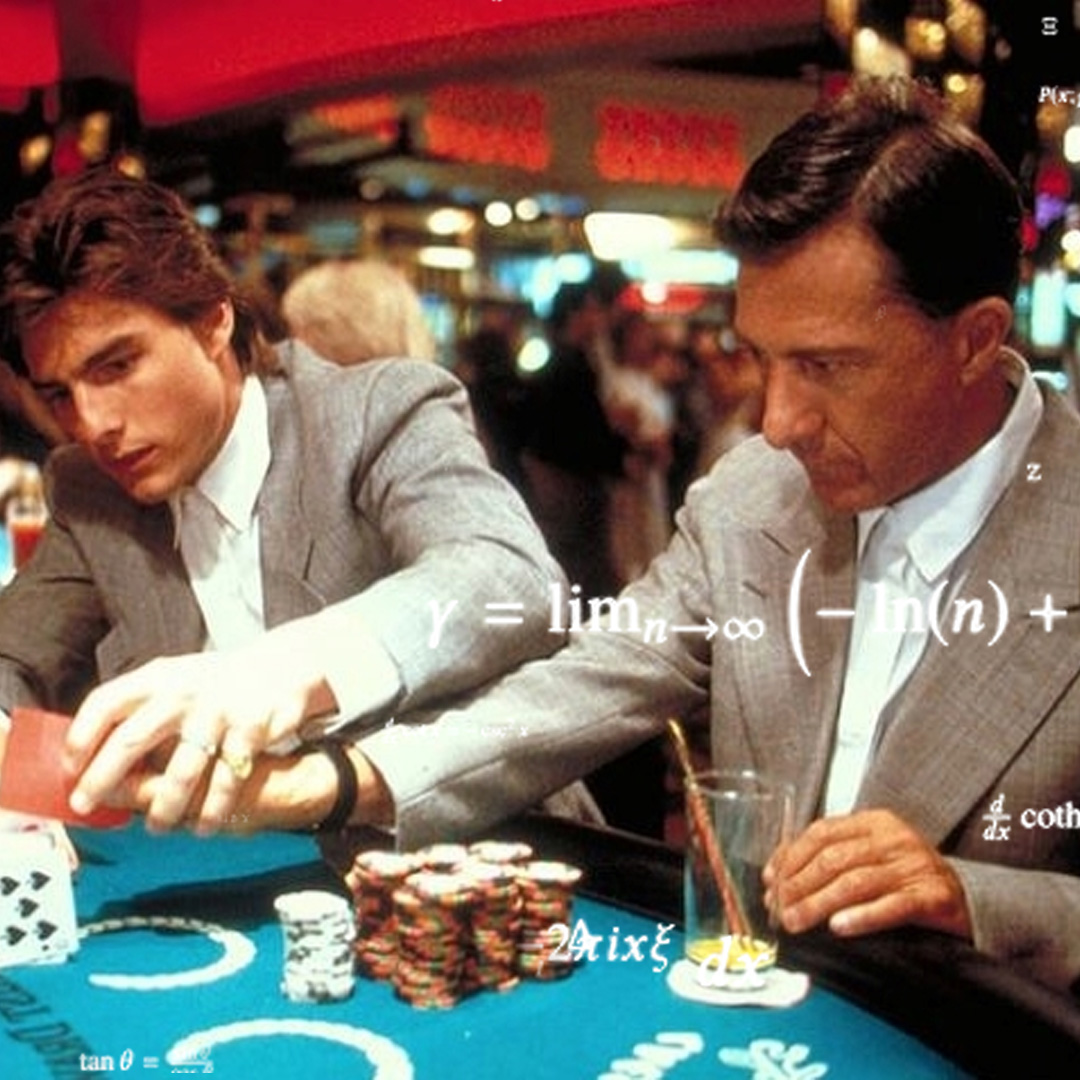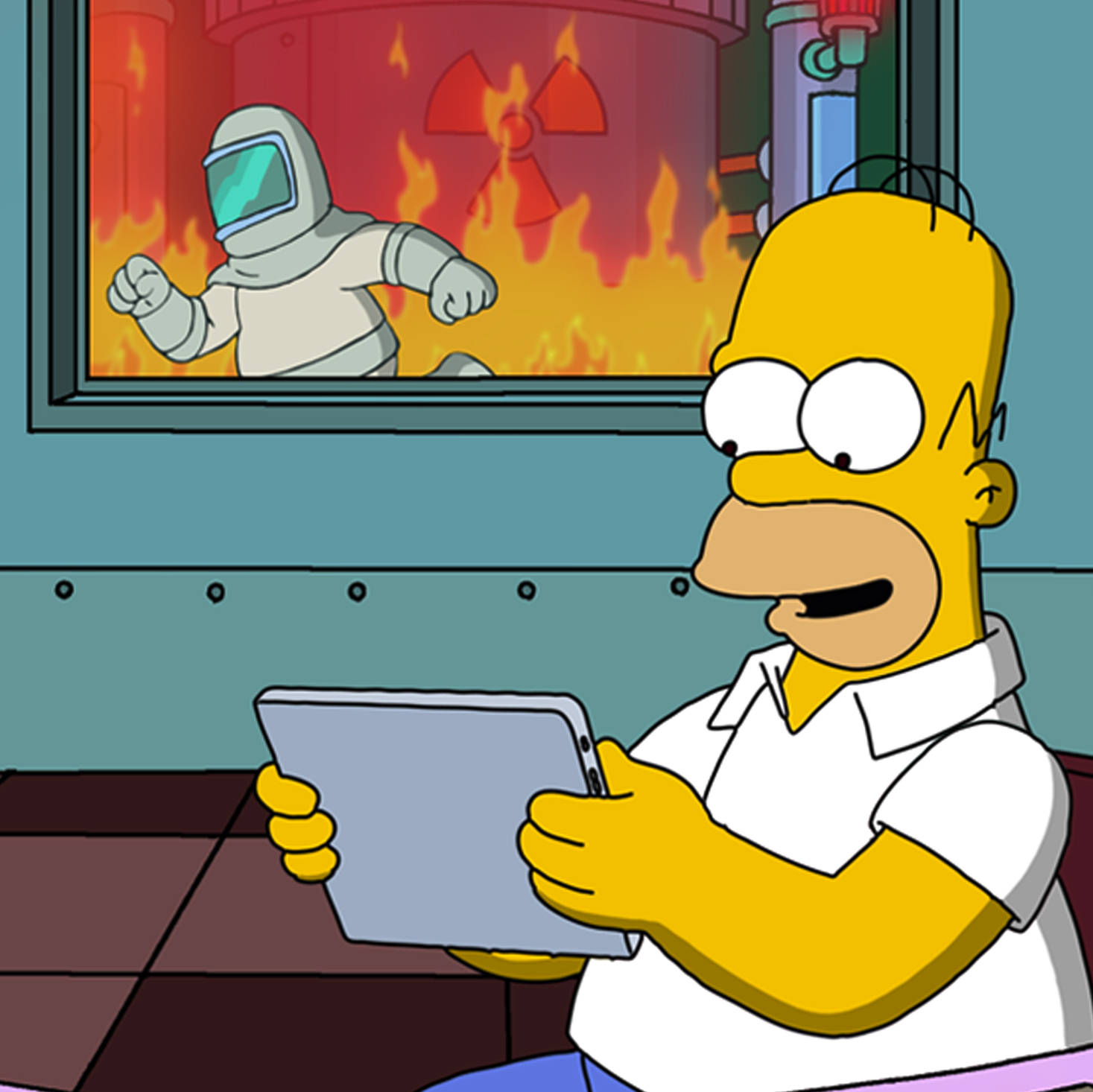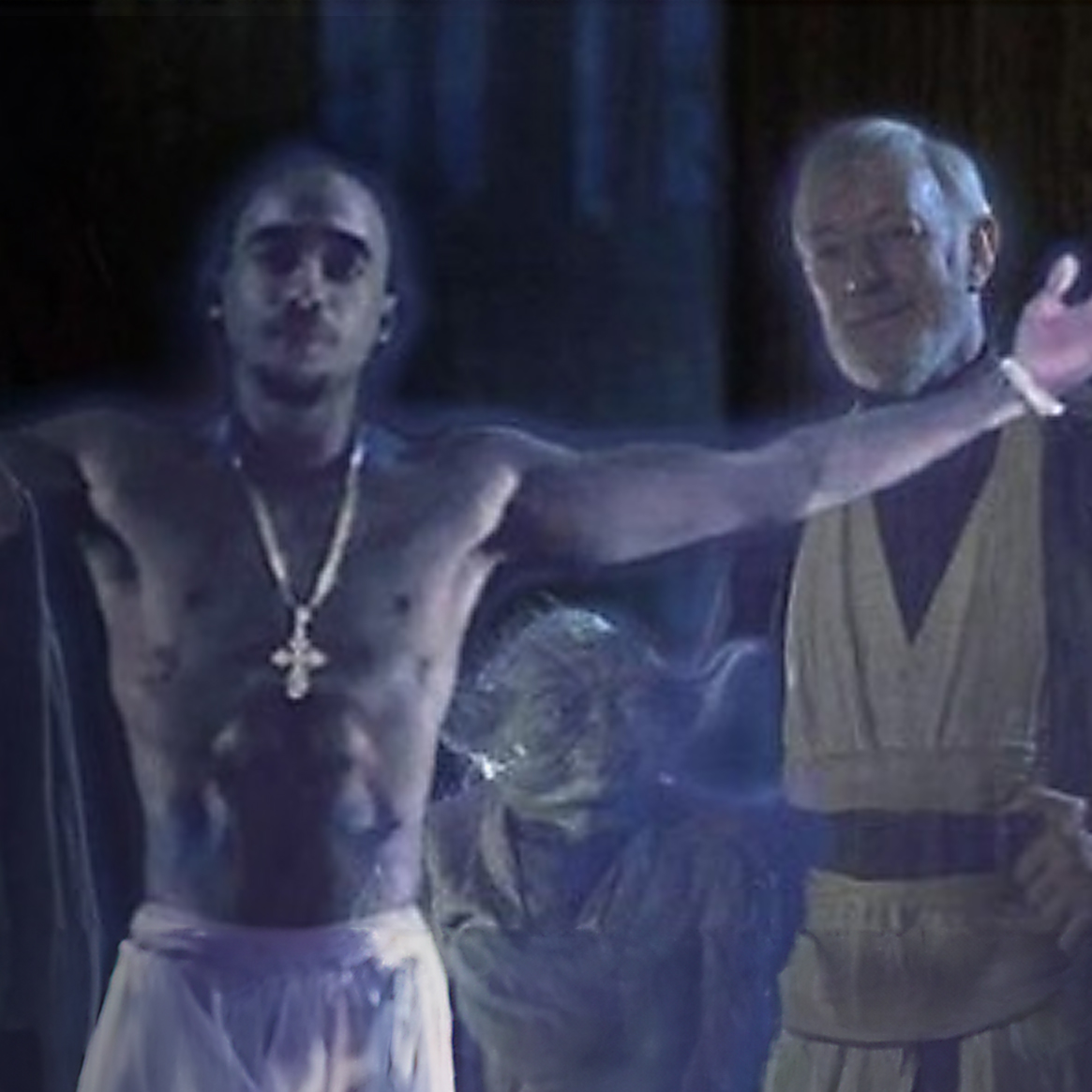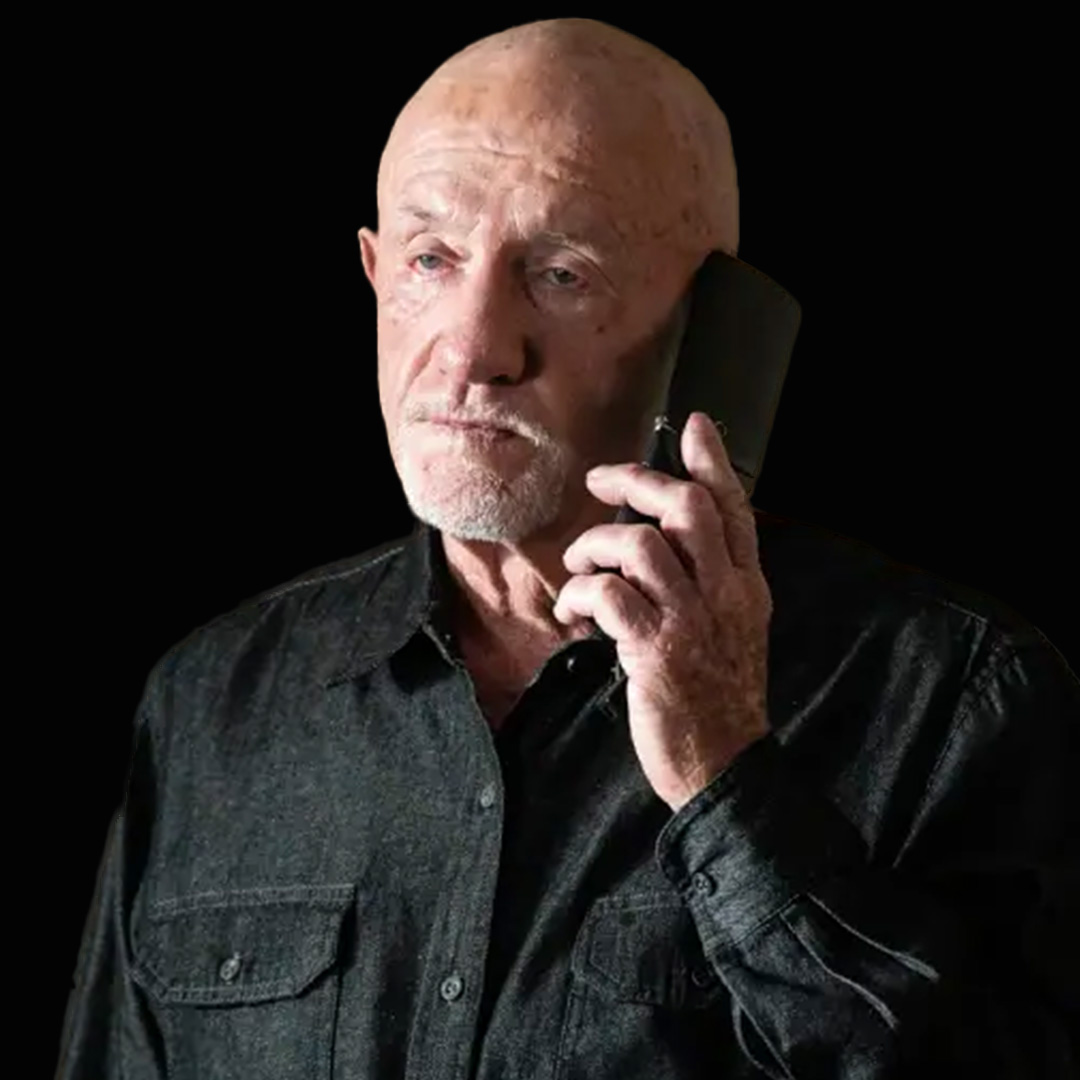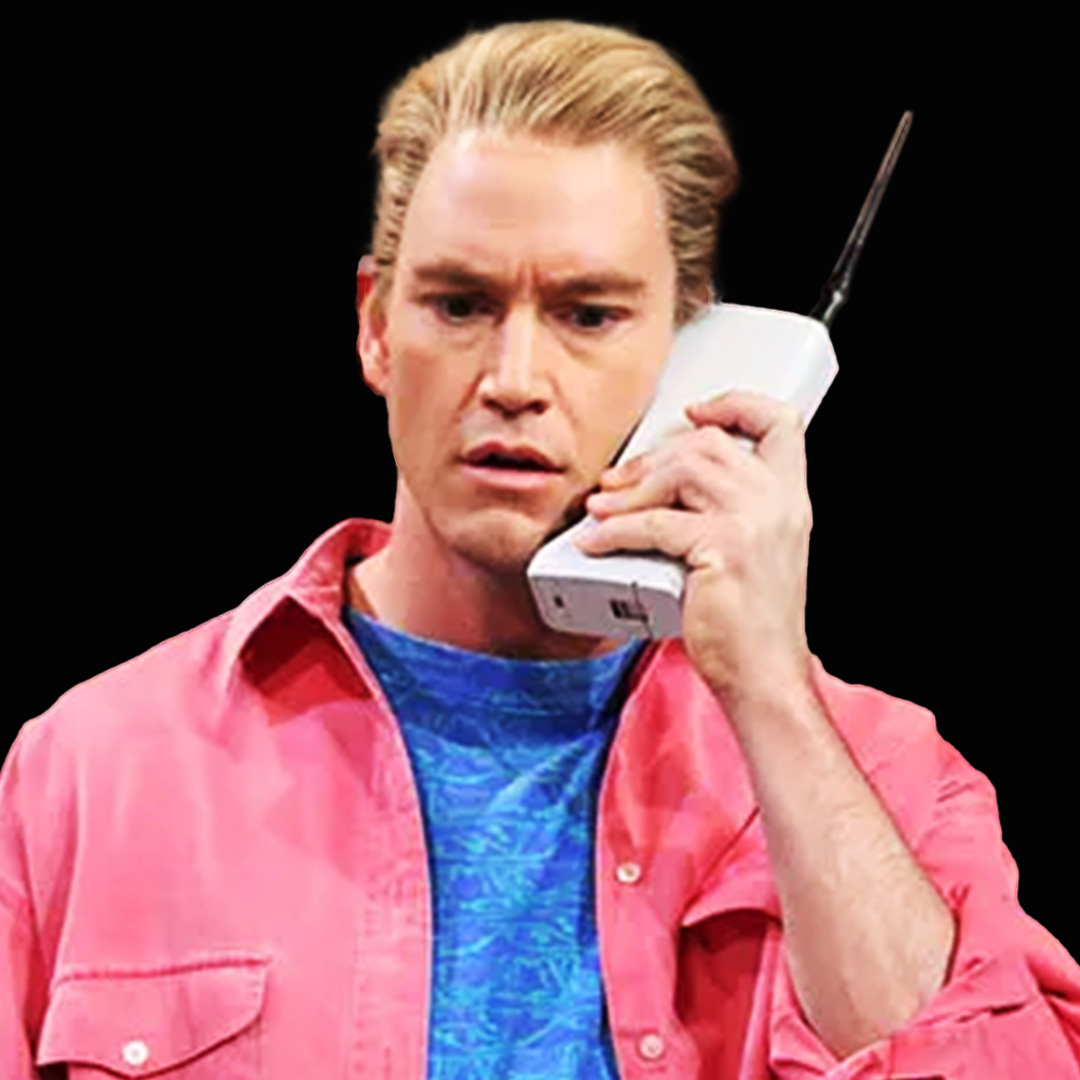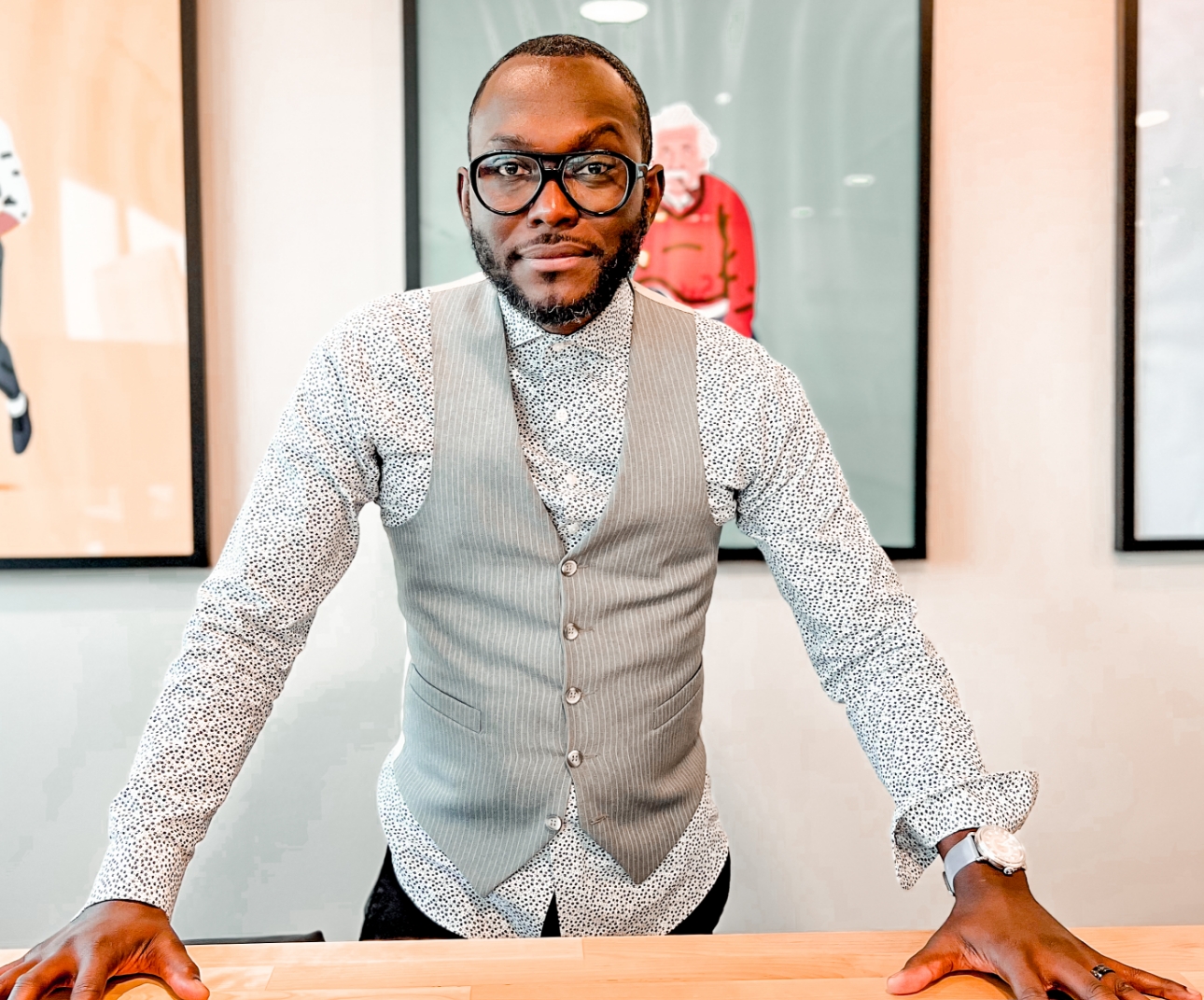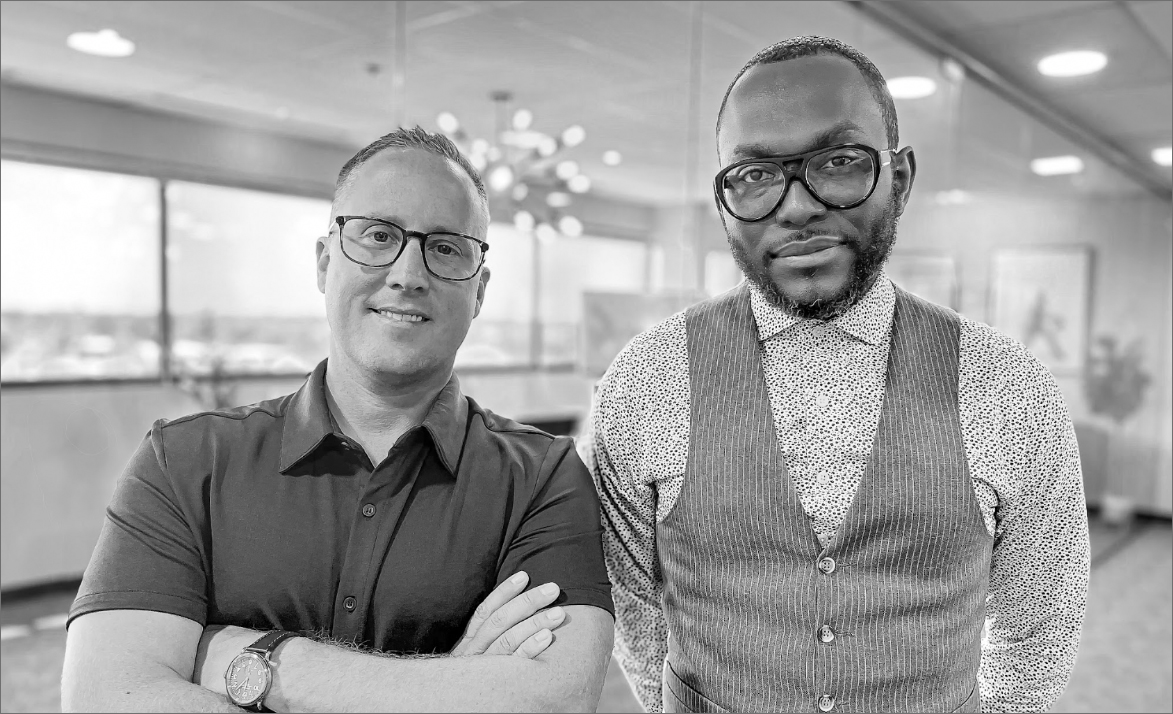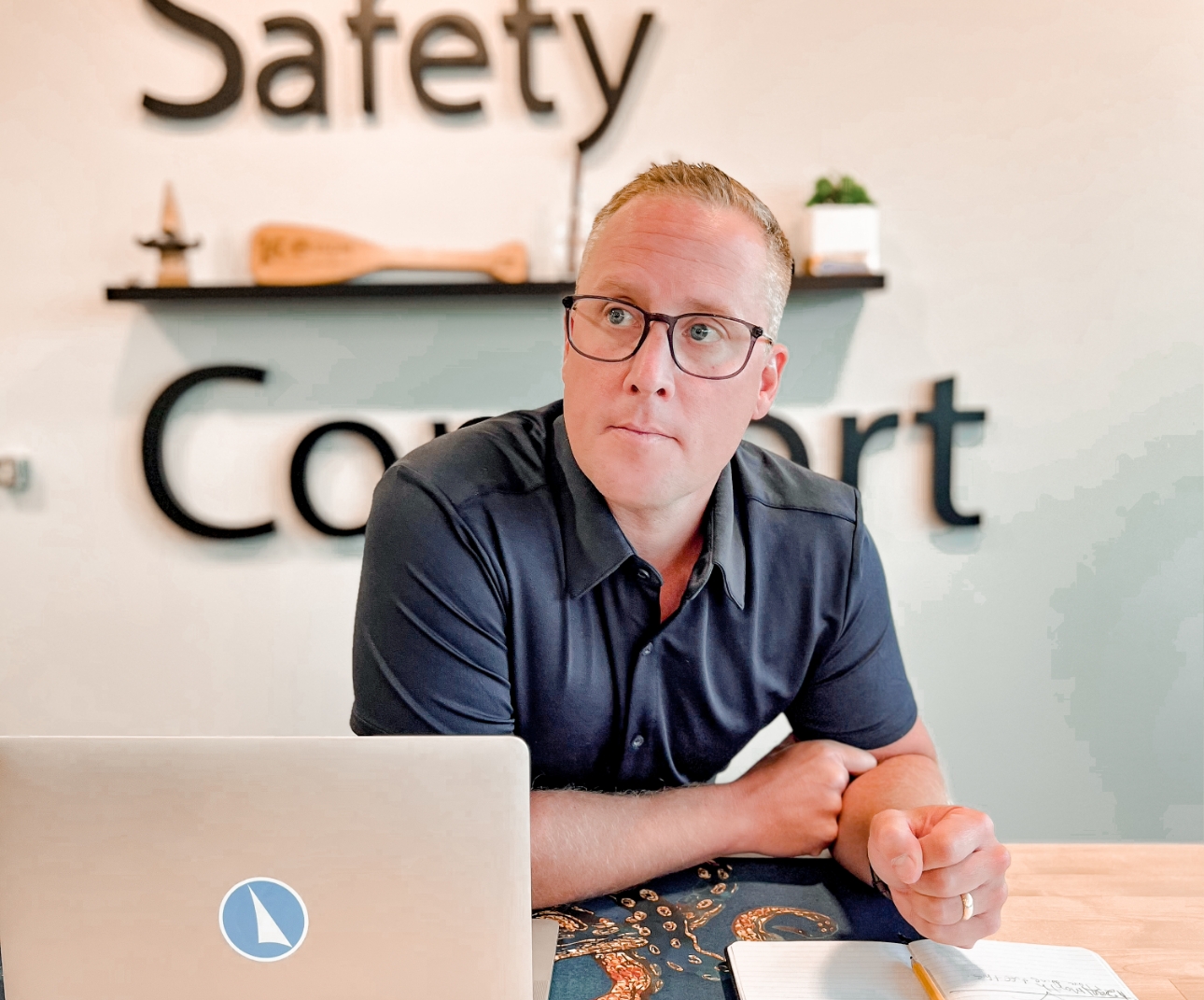00:08 – 00:34
What is social media? We’re doing. We hear this all the time. We’re doing social. All we got someone doing social. We gotta start doing social. And I think it’d be cool to talk about it. What is social media? What is doing social media mean and what does that mean and how does that differ? I think that’s a big piece of this to help you to see brands use.
00:34 – 01:03
Social is way different than how B2B brands use social. I’ll also say social for big brands is a must have if your product is on every single shopping or every single grocery store. You’ve got a duty now on some level, to monitor and listen to what’s called what the social chatter is. We’ve seen some good examples of what happens when you don’t pay attention to this stuff.
01:03 – 01:26
So if you’re everywhere, you’re a big brand. You’ve got no choice. Maybe you’re not going to take part in it, or you get to decide how you’re going to take part in it. But listening and monitoring this, that’s a must have because there’s chatter going on. I think it becomes a different focus for these. And that’s what these big service, businesses as well.
01:26 – 01:51
Right. I think of like an Uncle Ed’s oil change or certainly a Little Caesars. Like they have to do it. They have to be tuned in to what people are saying about it. On the flip, on the B2B side, I think they often get like, see these success stories that have happened with social. And, you know, another thing that we can talk about a little bit is this viral.
01:51 – 02:14
The going viral. Like what that means for people and how that impacts the biz. And, you know, we’ve had our fair share of that too of yeah, we want we want to get that social. I think I think we can go viral. And that statement alone is eye rolling. Moment hits that it’s the if everybody knew if we knew how to make things go viral.
02:14 – 02:41
I mean, I remember talking about this with John of the, you know, big time creative director had a bunch of really good hits from an advertising standpoint. And him telling me, Nick, we don’t know. We don’t know what makes a hit. We don’t know why. Zoom, zoom did so good or the Counting Sheep played so well. Like we threw away a bunch of other ideas and for some reason it hit.
02:41 – 03:04
So there’s no, formula to it. I think there’s a relevancy. Where’s the culture at, where society at? And then you find this like great connect that everybody gets. Everybody kind of falls in love with. But I mean, that’s not a you and I talk about Disney. They’re their formula kind of of how they made these hits.
03:04 – 03:32
And and I heard the guys, the creators in South Park, they did. They had a little video. They were talking to some class about how they write stories and this happens, but then not. And this happens. It’s got to be a this happens, therefore this happens. But then this happens. So then this happens like that. There is a pattern I think to a good movie or a good TV show that kind of follows that, that cadence.
03:32 – 03:52
But social viral creating content, why are we doing it. I think is a big question mark for folk and I and I think it’s, I think it’s an exciting topic for a lot of people. You know, I think it was similar when the app, the app game came out for all we need an app. Everybody needed an app.
03:52 – 04:16
Everybody feels that they need to be on social. And I don’t know if that’s entirely true, at least in what capacity they’re on social. What they think they need social for may not be the real reason that you should or should be on social media. That’s why I don’t like talking by because of the amount of subjectivity that is that exists on the topic.
04:16 – 04:51
Social is another another form or it’s another auditorium for you to decide if you should be in it or not. Just like creating a website. Got a business? Should I have a website? People had to decide should should I be in that space or not? And there is, a lot of opinion on what is doing social to a lot of opinion on whether you’re doing it right or doing it wrong.
04:51 – 05:31
What is right, what is wrong makes it really basically easier when you’re talking, measurable outcomes that impact business that because then been, you know, social channels are just another channel that you add to your mix. But it’s that’s not why social was created. That’s not why these platforms were created, was to create, an auditorium where people of like, ideas or, like beliefs, like, pastimes could share what was going on.
05:31 – 05:59
Give me a peek into your world or what’s going on. And for all of the challenges and issues that exist now, by that being a plan, did you see last week the market midday took a dip because a blue checked Twitter account made a statement and everyone thought it was an official statement from the administration. And it was it.
05:59 – 06:22
It was just a blue check. It was just a board check account. It was an opinion of someone throughout. And it you know, the day kind of rebounded. But that’s how subjective and volatile it is now. And so for brand you know I my biggest pet peeve are brands that think they should be creating posts for every holiday.
06:22 – 06:48
No, you shouldn’t. Just because it’s a holiday doesn’t mean you got to say something about the holiday, especially if it’s not authentic and how many people that we talked to. When we ask about social, they say, oh yeah, we’re doing it. And we say, what are we doing? And it’s, oh, we’ve got someone, that person, you know, on all the holidays, we make sure to wish everybody, safe, happy Saint Patrick’s Day and yeah, man, heck yeah.
06:48 – 07:22
And there is, there is the whole PC aspect of what should we be contributing to the conversation that is happening, right? Versus people asking the the right question of can we be art? Can we be authentic in what we contribute to the conversation? And we social platforms make it really easy for you to forget some of those simple rules that we learned as kids, right?
07:22 – 07:51
If you want anything nice to say, don’t say anything at all. If you don’t know subject matter, don’t perpetrate like you do unless you have a social media account. They don’t do whatever you want that’s doing right. Everybody that might know. Yeah. And so for businesses, the understanding why you’re there, why are we on XYZ platform. And that is a that’s a major step that a lot of businesses skip over.
07:51 – 08:14
It’s not let’s be there because you know we we can it’s a come on come on. No let’s have some intentionality behind why we’re going to be there, who we’re going to be there to listen to, who we’re going to be there to talk to, and then who we’re going to be there to help. You know, we always looked at it in like, put it into the 105.
08:14 – 08:48
Like social media is made up of five parts to me listen, monitor, engage, post and then sponsor listen. Listen is basically you using social media to do research, right? It’s to understand what people are saying about a specific topic of specific industry, product. What is the sentiment of our space? Sometimes people are talking about your you directly, the products or services you provide.
08:48 – 09:10
Sometimes it’s indirectly. So you’re a long care business. You haven’t started, you don’t have clients yet, but it’d be a good idea to go check out all the other lawn care services and see what the top gripes are of the customers there. I think is a great research tool, and certainly the bigger you are, the more important that becomes.
09:11 – 09:33
Next is to monitor. So monitoring would be what are what are people saying about your own page. So I we see this a lot to people. Get a social media account or create profiles on social media. They post a couple things to it. People reach out to it, but they’ve got no one equipped to engage with them, to respond to them, to add clarity to them.
09:33 – 10:00
It just goes and you hear nothing. I’ve got a good one. From when the girls were first born. I had a I think I did a Geico, or what’s the car seat that Geico get a Greco Greco grocery that’s like the newer one, I can’t remember. You know what it is, Murray? What Greco your club Greco. Greco.
10:00 – 10:28
Whereas a Greco Greco II Greco maybe it was them. Yeah, I think it was. Anyways, I took this picture of the world of Ali and I posted it on, I think it was Twitter and I hashtag safe baby, I don’t know. I was being cute and wanted to share a pic and I hashtagged Greco and not a word from him and it kind of rubbed me, like, wait a minute, I, I was there you,
10:28 – 10:55
Yeah, I gave you guys a free, a free shout out. And you didn’t know they don’t own the big brand, right. But monitoring, understanding like it is their duty now because they do have the platform they are on Twitter or were at the time it was something that they should have been made aware of. At the very least, how many times I was showing up or how many times, or people actually pinging our brand.
10:55 – 11:14
That, and maybe they did do that, but missed opportunity, right? In some degree. Even a little like button a little heart on the thing from them that would have been cool. Was that the last time you bought that from their brand? Yes, sir. No. And now put that on myself. I won’t put that on them. But I think here’s another opportunity, though.
011:14 – 11:30
It’s like the 24 seven. You got a phone number on the end of the commercial and you say you can call any time. That means you got to answer the phone anytime. Same with social. If you’re going to open the social door, then you kind of got it. Yeah man. Except the fact that you’ve got to be available.
11:30 – 11:56
So listen monitor engage. So that’s where Greco missed it. For me it anyways is they didn’t engage. I was giving them some love and didn’t get anything back. And whatever scale that is one guy of all the car seats no big deal. Then you get into posting, which I think this is where most people go to posting. What are we going to post when in reality that’s probably the least important of all the sections.
11:56 – 12:18
Last one being sponsoring content, which I think is a huge opportunity for basically any brand. Almost fair. Like, oh yeah, to spot the targeting ability that we have on social to be able to drive targeted ads to a, a demo and a Geo to allow them to go to your website for the next steps, I think is huge.
12:18 – 12:37
Yeah, posting is where everybody thinks it goes. No one really thinks about the listen engage monitor piece. They go to what are we going to the holidays? All right. We got to get a post out. It’s final four week or whatever it is. And that’s where I think it kind of opens up of what should we be doing.
12:37 – 13:11
Well, we got a I we’ve heard this a bunch times. Oh man. We gotta we gotta start posting to our social. I don’t know now, should you be running some targeted ad campaigns on social? Heck yeah. And measuring those and split testing them against each other? Heck yes, you should. But to what end we took? We talk about this even for us of, how and why we used the platforms that we used were based on what the outcomes we’re looking to achieve, or at least who we wanted to talk to.
13:11 – 13:32
So I remember this was years ago, but and you can tell me if I get this wrong, but Twitter was our live event feed. So if we went to any events and learned about industry stuff, we would tweet it. You know, that was our live, live learning stuff. We would post on Twitter anything about our office in our culture and our people in our fun that we have.
13:32 – 13:55
That was on Instagram and that was basically for, employees and, and new employees of, hey, get a get a sense of what were like prospects as well, I suppose of all right. It’s guys like to go hang out and go to ball games and they’re, they’ve got an office and they collaborate and okay, they’re actually real people here in Troy, Michigan.
13:55 – 14:19
And then I can’t really remember what we used Facebook for, but and then LinkedIn was more of our positioning stage as a thought leader or as a industry expert in our space. So that was more maybe our a little more pitchy or a little more. Let’s show off the knowledge that we have. I think that worked for us.
14:19 – 14:48
Then. We didn’t. We don’t have that today. I mean we’re not, we’re not playing it the same way today. So I, I think it’s I think it’s hard for people to when you don’t, when you’re all focused on the, on the posting side of this and not using it as a, as a resource to learn from your audience or learn from the industry and what people are saying, you go into this leads post and you think you think you’re going to get, what do you think you’re going to get from it?
14:48 – 15:22
Yeah, and that’s the tough part because in you and I, we’ve lived through this phase of what the value of a follower was. I mean, it was, you know, shit, 40 to 50% of your followers would see your content organically to 1% or your followers less than 1% see your content. And I think that created a lot of confusion for companies and of understanding what kind of value they were pulling from these platforms.
15:22 – 15:51
Right. The, it isn’t rocket science, but doing that work upfront of answering the question, why? Why are we going to be on this platform? Why are we why are we pulling up to the microphone in this space and if you solve that, if you answer those questions, the rest of it is fairly easy in AI. You know what I think?
15:51 – 16:11
About what? That you’re right. And you know what I think that comes if you really do that exercise, you realize how expensive it is if you really go through the work. Yeah. We like to bring up Wendy’s. Wendy’s had a good shtick going still does, man. Still one of the does one of the best cans out there. And it’s basically, kind of trash talk, right?
16:11 – 16:36
A little bit of trash talk, a little bit of satire, kind of comedy, funny. Kitschy kind of things, without a doubt. And I don’t know how big the team is. Is it eight people? Four people or 16 people in that realm, or 60 or 60 people? There are people dedicated to sitting in a room, coming up with a bunch of ideas, throwing a bunch on the floor to come out with the best stuff.
16:36 – 17:08
So I love to know the investment made in. They’ve been doing it for years, so it’s got to be worthy. That’s the one thing that I love looking at these other companies and hey, if it didn’t work, they wouldn’t keep doing it. Do. Yeah, but to get to that threshold to like if, if, Wendy’s deems it so and I’m sure that they do that this social media, the Twitter way that they handle X now is deemed appropriate to keep going.
17:08 – 17:31
They’ve done the math in that minimal threshold of what it takes to make it work. They hit that they didn’t limp in with okay, here you go. Newest guy on the team. Here’s your here’s our Twitter account for Wendy’s. Have fun. That is definitely not how it went down. They knew what it took to actually made do what they’ve done with their channel, which is content right here.
17:31 – 18:09
Oh my gosh. Oh you mad. Yeah. In the now I think a lot of companies who have, social responsibility teams or community outreach teams, quality quality assurance teams, it does give you another vehicle to be accountable to those things because now you can, you know, you got a customer who shows up in your car, see, you have a vehicle now where you can, be, responsible for responding to you.
18:09 – 18:26
You had a quality issue with their product. You now have a vehicle to be able to get in front of you and deal with it. Oh, that’s a good one. I wonder what my what the outcome would have been if I would have said something about car. See. Yeah. Like negative some. Oh it wasn’t low loyalty. We flawed or messed up with it or a pain in the butt.
18:26 – 19:11
I wonder what it would have been then. Yeah, they’re probably too busy dealing with that then to deal with the good stuff. Yeah, well and that’s, that’s kind of what I, when I’m underwhelmed with social platforms because the as soon as you invite critique which is healthy because you should have, you can’t be mad at the what you get, especially when you’re not prepared to, to meet it to me, to head on in the the best businesses, the best brands that succeed on these platforms are the ones who take the good with the bad, and they know how to keep a steady hand in how they’re using, how they’re leveraging it.
19:11 – 19:36
You remember our account back in the day? This guy had a t shirt biz. He was selling t shirts. And part of what we wanted to do to help him was run ads, run sponsored content on Facebook to a target audience to sell these shirts. And we got it going. And people were starting to comment on the shirt and the post that we had.
19:36 – 20:01
Just good stuff. Not some people were talking trash, which is normal, but a lot of cool way to go. And his philosophy was, and he’s a he’s a 90s guy, right? He was he was he knew how to build brands. No doubt he did it before social. So we did this and he started getting the comments and I’m like, hey, you gotta you gotta start like you want us to go in here.
20:01 – 20:27
And he’s like, no, man. We we don’t respond. We’re not responding to this. But that’s never been the case that you put something out like that and you you engage with the audience. No. Yeah. And it was, then we shouldn’t do this. Yeah. Because that’s what social is. If we’re not going to play the game. Yeah. This it this isn’t the medium, this isn’t the way the the way to do it.
20:27 – 20:53
And it being like, For me, I don’t know if I was for him, but yes, the, you know my stint in music, the best example of poor contrast that I have is back in the day when a superstar artists would release a new album or go on tour. You’d see them everywhere, right? They were they were touchable, quote unquote.
20:53 – 21:16
Soon as I was over, they went back and became reclusive. And you didn’t see them? They went back under that changed. Right. So that we were condition as fans, as consumers. Oh, they’re back out again. Yes. I think Taylor’s was probably the earliest. She broke it. She broke it, man. Where people could reach out to her on her account when she wasn’t as big as she is now.
21:16 – 21:57
And she was responding. And there was a brand advocacy that was like, instantly created. The show notes people’s weddings and stuff where it well and certainly no proximity. And it’s also is in our pocket. Right. So the you’ve whether you were physically in the same room or not, you felt like it when you started getting responses from, these, these entities, these bigger than life personas that people had access to and that changed that was the shift of really asking yourself if we if we go on this platform, what do we intend to do with it?
21:57 – 22:23
What do we want people to expect when we get on this platform? And that’s what makes it so tricky, especially with all of the ability now to do tracking and to really try to eke out what the impact is that you’re getting, be it health, the bottom line of a business goal or some type of social cause, wherever it is being able to measure effectiveness and impact, which is people.
22:23 – 22:58
I think companies, we do a poor job of asking those very real, simple questions upfront so that you can tell your audience, tell the people who might be listening to your microphone what you hope to get from it. I think to like with a lot of, I’ll say, the majority of companies that we talked to that say they’re doing social, have someone giving minimal effort, not a full time gig either, but they have someone that is focused on some level to listen, monitor, engage in pulse yet.
22:58 – 23:28
But where I think the the message is, is that all that work, you’re not doing any of the marketing to support what you’re going to yield from the learnings that you create from that. So if you got a social media person and let’s pretend they’re really good at listening and they’re monitoring your own platform, but the only things that you’re posting on your plant like and when I say monitor, I mean monitor the activity of your own page.
23:28 – 24:01
Right. Or the engagement are people are people asking questions about what I’m posting? Are people liking it or not liking it? That’s important to do. But when today, without sponsoring that content, you’re talking about such a small percentage. So when you take a step back and you’re like, all right, you got this poor guy, this poor kid spending 15 to 20 hours a week posting to social and he this thing’s getting seen by like four people.
24:01 – 24:32
And it’s funny because you can see it in it’s for employees like every post has like four likes on it and it’s the same three employees. And then the family member of another employee and I our joke here is, you know, with all my aunts maybe are you describing yourself? No matter what we’re going to get my aunts to like our posts are in now, if we dedicated, if that was the KPI, I mean, for the time that we invested into this, does it make a lot of sense?
24:32 – 24:56
So where I think people should start with this is really utilize how can you utilize social as a marketing platform for yourself. And that’s where the sponsorship comes in. That’s that’s what we see a lot. Yeah we’re doing social. They’re not running ads on social. Well then our next question is you must have a big social following your your dedicated 20 hours a week to social.
24:56 – 25:21
You must have hundreds of thousands of followers that are chattering about you, that you got to keep your thumb on the pulse stuff. No, you just have someone walking around with the camera, taking pictures and trying to relate it to what’s happening today. Heck with that, sponsorship is super important for generating KPI, generating a an outcome that you can measure against it working or not working.
25:21 – 25:46
And we know that we rarely see that, we rarely see it. And it’s, it’s when when we do peel that back, you can see how this social is really used. And this is how for us, outside of sponsoring content, social media to us is really used as a validator for people already looking for us. So it’s not necessarily the entry point.
25:46 – 26:13
I think a lot of businesses would would consider that their posting on social media is going to create these entry points for new customers. It’s not that is not what it is. It is to cultivate, engage and in and grow the relationship you have with your existing customer base. Or this is without posting or it’s a validator for customers thinking about working with you.
26:13 – 26:31
And that’s kind of our, like our social what we looked at as our own social that it was really a tool for. All right. We met with Nick and Mike and they’ve done this before. We think they’re going to be pretty good to work with. Let’s go. Scope them out a little bit. You’re going to go look at our LinkedIn page.
26:31 – 26:52
You’re going to go look at our corporate social channels and see what we post and where we go and what we do to get a better understanding of what we’re like. You’re not interested in knowing what we’re like until we’ve proven that we’re on the short list of consideration to be someone that we would work. Yeah, together. I’ll put a ash on there because B2B totally with you.
26:52 – 27:22
I think, there’s some variance depending on what you are selling or promoting. You know, my my vice man, I am the king of impulse shopping on meta. I mean, I always, never sponsored ad always. Oh, yeah. 100%. So the, the there is a gray area where, you know, my running joke of, I’m not the best golf player on the course.
27:22 – 27:49
I just look like, I, I look the part. I follow these accounts where they have some really cool apparel that they’re posting organic things, and if they do it right, when they do it right, when they were in sponsored content. I’m already I’ve already validated that they’re in a git company that I appreciate to some degree.
27:49 – 28:23
And their competitors might see it and I get hit up by them too. And I start there’s this there’s this domino effect of I’m following you organically. Other people see it, your competitors see it, and they know that this is a guy who is prone to buy the latest t shirt or the latest gadget off the platform. And I think companies who do a poor job of answering those questions, he miss out what the ones who they well, we are doing it.
28:23 – 28:46
We we are we are posting. They miss out on what who you pulled core you post them for. Yeah. And like why why would they follow you in the first place? That’s the real question. Like why am I in like I could see us here. I’m gonna follow Nike. We’ll follow Nike because they just have cool stuff. They got cool shoes that they post.
28:46 – 29:06
They have cool apparel that they post. I’m gonna I’m gonna get the golf apparel. I’m going to get the softball apparel. I’m going to get the sports that I don’t play apparel, but it’s Nike. When I think about the golf, the golf stuff and and even the people that I follow, like, I’m not following a bunch of companies.
029:06 – 29:29
Yeah. Like we’re following personalities. You and I were getting into this last week a little bit like my one of my faves. There’s, It her name is Paige Spiranac, and she’s a bait. I mean, no doubt about it. She is a babe, and she can golf. I think she was maybe pro for a little bit. Like, she’s not a she’s not good enough to be a pro.
29:29 – 29:51
I think maybe she played Navy College. Got up there I don’t know. She made it all the way to the LPGA or whatever. But she didn’t stick around. She wasn’t good enough. Got a great golf swing in and she’s got some level of, personality. Right, a little fun she’s got good. She is in these videos showing you how to hit a ball out of the sand.
29:51 – 30:17
She’s doing these videos showing drills of, hey, put a towel. This will help you. This. I mean, it’s cool stuff that I can see that beautiful golf courses. So it’s a good thing to follow. Now every so often she is going to do a sponsorship with someone. So again I’m seeing order organically. It’s an organic post. I, I follow her and I do I see spot, yes.
30:17 – 30:39
The only time I see sponsored content though is when she’s in the ad and it’s not her account though. You know what I mean? So it’s it’s a golf company. Their account is running the ad, but she’s the one that we recognized to watch it, and that’s what I think. So getting into social as a company, you really do have to ask yourself, why do we want to be here?
30:39 – 31:03
If you want to be here and get followed, I think I follow some like fishing stuff too. And there are brands and I think it’s fishing line. My memory serves me correctly, but all the ads are people catching big fish and blazers. Yeah. So it’s it’s makes a ton of sense. You got all these guys catching fish. You send me the video, I’m going to post it.
31:03 – 31:29
That’s a good strategy. You know those guys at the at the fishing line factory, you know, walking the floor, showing us how strong the fish is. The line is probably in the last hour long, right. This was the remember the dude making mix and paint and, Charlotte Sherwin-Williams mixing the paint. Do like. Hey, I might have something here.
31:29 – 31:50
You guys want to take it? Sure. Oh, no. I was just like, heck no, we don’t. Do you? I think they fired. I’m actually like, no, you’re not supposed to do that. You’re supposed to be working, not making videos. He went to another smaller but big paint company and they said, hey man, have at it. Make paint. So here you go.
31:50 – 32:11
One company says, you’re wasting our time. Please don’t make these. And it was on his own to another company understanding the value of what was happening that said, all right, we’ll hire you. All we want you to do is make paint videos. They knew they have KPIs. They have some value that they’ve determined of how they can get more exposure to their.
32:11 – 32:38
Yeah, their line. And this is the piece on their personal brand versus corporate brand that I think gets missed. And again, I’m talking outside of sponsor because I think everybody, you know, selling t shirts on golf t is selling golf clothes, whatever. You should certainly consider how you’re playing social from a spotter. But doing social, you know, being on social that is it’s hard.
32:38 – 33:05
It’s hard work. It takes a lot of thinking and a lot of strategy. That’s a I mean, it’s the never off broadcast. Yeah. Your social platforms are basically your 24 over seven studio to create content. And if you don’t have a good idea of who that is for and what message you want to get across, you’re going to start making holiday holiday posts and not going to get anywhere with you.
33:05 – 33:33
So I’m here for drinks, for any business to consider or to walk through. When thinking about social one answer the question of why, why? Why should we be on this platform? Why should we be doing social to have some type of idea of who it’s for? Who are we doing it for? Are we doing this for? And there are some times it’s okay to say we’re doing this for ourselves.
33:34 – 34:04
We’re doing this for our, the, our own crew, and we’re giving them a glimpse into it. This is what Will Smith did. And who was my guy that quit? Run DMC, Reverend Rev run. No, the other one, not Reverend. He had his TV show. Uncle. Uncle Russell. Russell Simmons. Oh, from Def Jam. Yeah, he was the man that content creation like in what was it to him, I’d imagine.
34:04 – 34:33
Was it a glimpse for us as fans to get a little glimpse into what his life was like and what his thoughts were and what it values were? No, that was that was it. Yeah. Number three. No. What, you want to get out of it? What do we want to get from it. Right. And number four, being a creative, let’s be authentic in what it is you’re putting out.
34:33 – 35:01
Be authentic about what it is that you’re sharing, what you’re creating, what you’re posting. Give a sense of what the real is. Because the the slippery slope with social is, you can perpetrate, but you’ll be found out. Yeah. And it’s so easy to get like there’s to block out the noise on social is so easy. I see people do it everywhere I go.
35:02 – 35:20
Doomscrolling is the new term like. And then you see one stop once in a while and it’ll stop for a couple seconds and then I’ll go, yeah. And that whoever’s there stop stopping on did that. Yeah. The only way though, you get to that authenticity piece is to answer the first two questions. Yes. Why are we doing this and what was it for?
35:20 – 35:47
I get to do that. You’re you’re going to come off. Is as cheap as inauthentic as a as a shtick. Yeah. Yeah. You are your noisemaker. Yeah. Yeah. And noise works, too. I mean, we see a fair share of that, but that’s coming from people. And that’s one of the things that the all these brands, or all these social media outlets were map for people to people to people.
35:47 – 36:09
It was people connecting with people. When it first came out, it was the how to how to the the girl that you saw, the night before that you didn’t have enough guts to go up and talk to you. You had an opportunity now to go on social and send a message, don’t do that. That. Well, who isn’t that?
36:09 – 36:32
That’s the. That’s the only way now, isn’t it? I mean, I don’t think I think you don’t see him anymore. You just kind of go here to to find him. Yeah. While I was watching the pick it up movement off the hook in that, I guess Bertrand. You know, it’s funny you say, don’t do that. I don’t know how to do it anymore.
36:32 – 36:57
I. I don’t need to know. Yeah. I mean, thankfully, I was like, you know, that’s the. And so but it does, it changes, it changes your ability. We joke about, like, walking up, you know, walking up and getting told. No. Yeah. And, and, you had to kind of live through being told, okay, I hear you, weirdo, or whatever it was, and now you don’t.
36:57 – 37:26
Which makes you a little more gutsy at what I was saying was the the loudness, you know, all the noise typically comes from people. So if you’re going to if you’re going to do social media as a brand, you still it doesn’t absolve you from connecting with people. And that’s what I see probably the most of is these brands talking to an audience rather than a spokesperson, an expert in the brand.
37:26 – 37:49
If influencer, maybe this happens as well, representing the the audience to engage with who you’re trying to tone is good. Don’t you can’t talk at the up top with yeah. Yeah that’s the best. But the biggest accounts are those. Yeah they’re they’re talking with their audience. And that’s a hard thing for brands to do. And it always has been.
37:49 – 38:08
Right. That’s a slippery slope in its own I mean what what when Wendy’s coming out of this a few years and now and it being a success I guarantee there are people nervous about this approach right of like, yo, you guys are throwing us into some things that maybe we shouldn’t be playing with. Well, it panned out, right.
38:08 – 38:37
We are talking about heck yeah. And they’re doing a heck of a job. All right. I feel a little bit better about talking about the subject now. I’m going to cheeseburger off Dave’s. Dave’s cheeseburger. They. Thomas. Yeah. Good stuff man. Well, I hope it was helpful. I hope it’s a little more clear. I think every, you know, I can’t think of a business that shouldn’t be considering social media as a platform to run media run ads.
38:37 – 39:01
I mean, the targeting alone is incredible. You know, who knows how long we’ll have it. Yeah, this it is amazing. When you think about all those up listening monitor engaging all the things that you’re having, your internal social media manager doing, that’s what I think needs a lot of work and understanding. What do you want out of it?
39:01 – 39:14
Right. Who are we doing this for? Why are we doing this? What are we looking to achieve? That is paramount.


